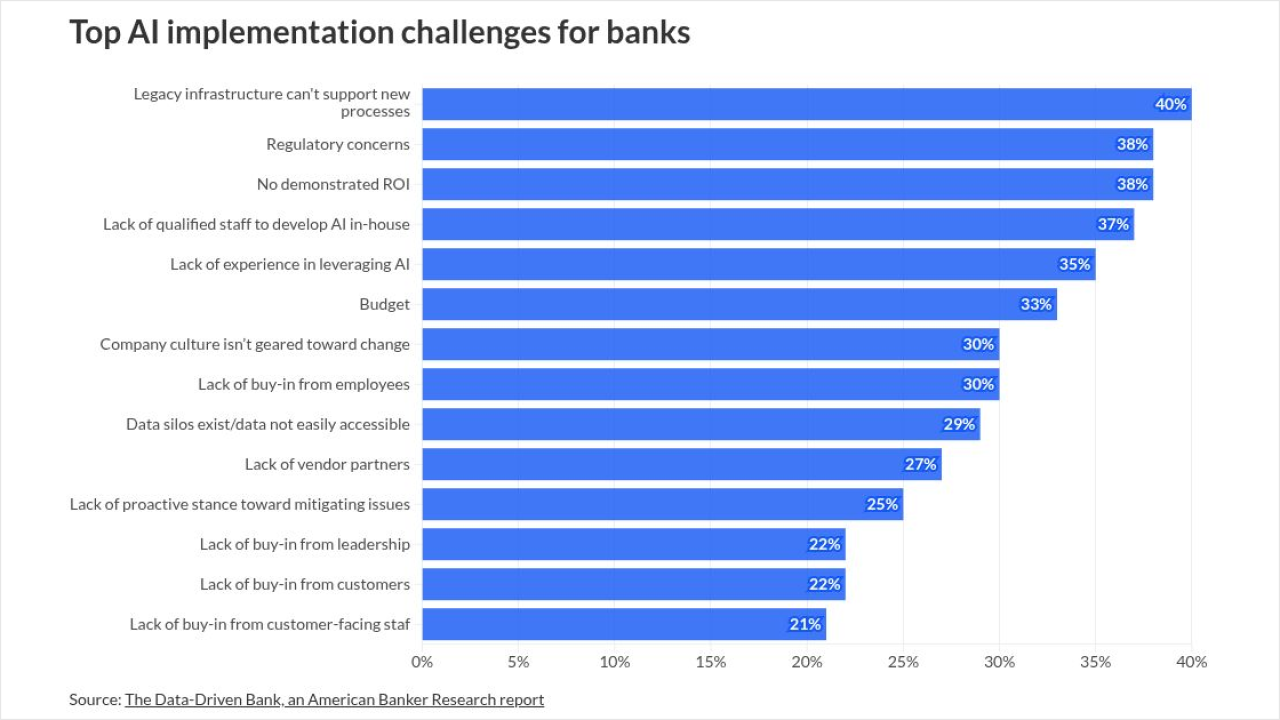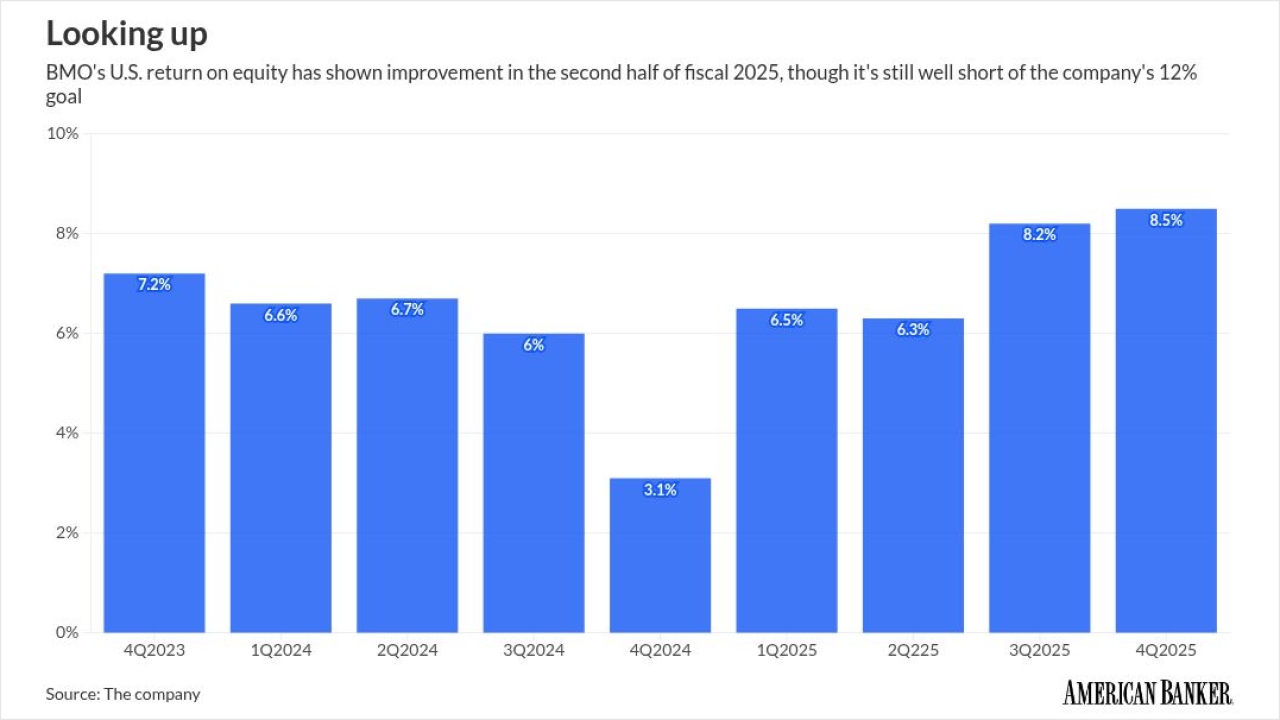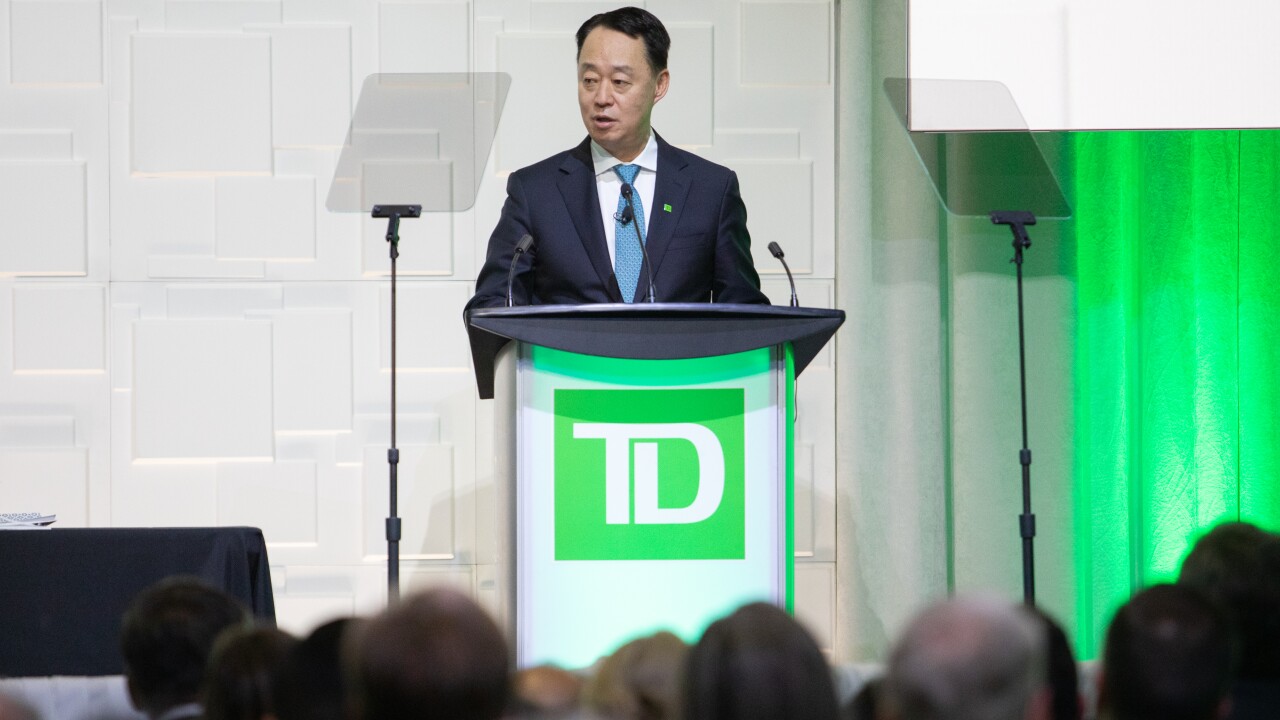Want unlimited access to top ideas and insights?

Banks are once again closing branches rapidly.
Taking into account openings and closings, U.S. banks reduced the nation's branch count by
U.S. banks shuttered 439 branches in the third quarter alone, the S&P Global data show. That was up from 199 in the prior quarter.
It also marked the highest quarterly level of net closings since the first quarter of 2022, when banks turned out the lights on 960 locations. The latest quarterly decline extended a 15-year trend. In 2009, there were nearly 100,000 branches in the U.S.
Analysts say banks are investing more in their online platforms, where customers prefer to handle increasingly more of their banking transactions. As a result, fewer branches are needed, and banks are continuously cutting their physical footprints in response, pushing some of the savings to their bottom lines and reinvesting the rest in evolving technology.
The trend was hastened by the social distancing measures enacted to
"Let's face it: The world is only going to go more and more digital," Michael Jamesson, a principal at the bank consulting firm Jamesson Associates, said in an interview. "Banks don't need as much space, so there's going to be more branch trimmings."
Bank of America led the industry in the third quarter with 41 net closings. In September, the banking giant said it intended to open about 165 new financial centers across 63 growth markets by the end of 2026, including nearly 40 this year. Yet it continues to shutter underperforming branches and, to date, downsize its overall physical reach.
"We're trying to get coverage in the top markets across the country so that we cover the American population in an efficient and effective way," Chairman and CEO Brian Moynihan said during the company's third-quarter earnings call.
Wells Fargo was a close second with 40 net branch closings, followed by Toronto-Dominion Bank with 39.
U.S. Bancorp was in the top 10 with 23 net closings in the quarter. While the company is far from abandoning branches, its advancing digital capabilities enable it to cover more territory with fewer locations, President Gunjan Kedia said.
The Green Bay, Wisconsin-based bank will record a fourth-quarter loss after agreeing to sell $3 billion of low-yield loans and mortgages. The moves leave the bank well-positioned for 2025, CEO Andy Harmening said.
"Our strategy focus is to create density in the highest growth areas within our current footprint rather than use branches to expand out of our footprint," Kedia said during the company's latest earnings call. "And the reason for that is that we have built some very good, strong digital capabilities that allow us to deliver our services nationally."
Large national and regional banks have led the downsizing charge, mostly because they have the largest branch networks and therefore the most cutting to do. However, banks of all sizes are shifting investments away from physical locations and toward digital platforms.
Banks often pursue acquisitions of competitors to reduce overlapping staff, services and facilities. The savings fall to the bottom line and can make M&A profitable. In recent years, closing branches has proven integral to deal-related cost cutting.
For example, the $24 billion-asset Provident Financial Services in Iselin, New Jersey, said as part of an effort to meet cost-saving goals tied to its
As banks tried to save costs while also growing through deals, M&A activity surged in 2021 to 210 announced deals, up from 112 the prior year, according to S&P Global. After a lull over the past two years, dealmaking began to rebound this year.
More than
"We've definitely picked up some new momentum, and I anticipate it will continue into next year," Jacob Thompson, a deal advisor and managing director at Samco Capital Markets, said in an interview.
To be sure, banks are not doing away with branches altogether, Thompson noted. Most bankers say that even their most tech-savvy customers want physical bank offices at which they can seek financial advice, open new accounts or manage major transactions such as large loans.
Banks also say branches in high-traffic areas function as vital billboards in key markets. In neighborhoods with booming populations or fast-growing economies, banks do still carefully open some new branches, even as they close others elsewhere.
"But the bottom line is, you just don't need as many branches," Thompson said. "I think you'll see more and more right-sizing."






